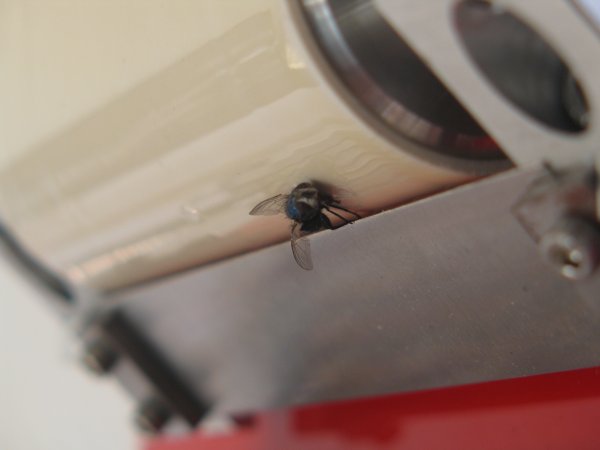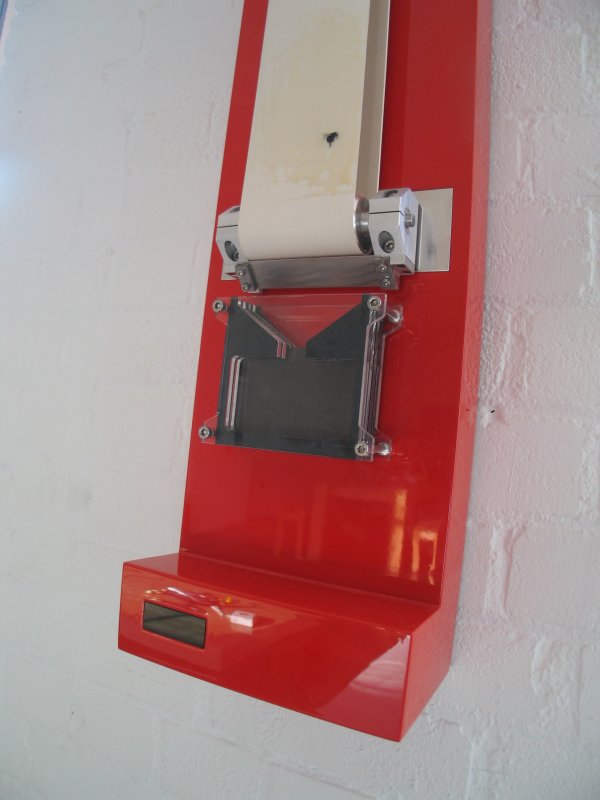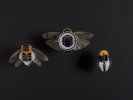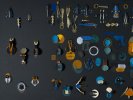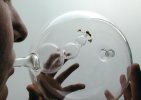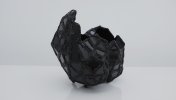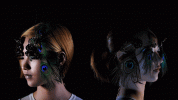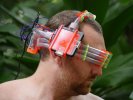Carnivorous Domestic Entertainment Robots
- Auger
- Loizeau
À quoi ressembleraient les robots et comment se comporteraient-ils si leur conception était dissociée des systèmes normatifs qui dictent leur forme et leur fonction.
Pour ce projet, nous avons ré-imaginé le robot, en nous éloignant des humanoïdes stéréotypés et des dispositifs sympathiques ressemblant à des animaux de compagnie pour adopter des formes et des comportements plus appropriés au paysage domestique et aux idiosyncrasies du désir humain.
Notre intention était de créer une nouvelle forme d'interaction et de relation émotionnelles avec un objet en empruntant au mythe de Frankenstein et à la notion de vie artificielle. En exploitant le potentiel narratif de la pile à combustible microbienne (le dispositif utilisé par les robots pour générer leur énergie) - en particulier son utilisation d'organismes vivants comme source d'énergie, la possibilité conséquente d'autonomie énergétique et la chose vivante qui en résulte - nous avons proposé une nouvelle catégorie d'objet entre animal de compagnie, plante d'intérieur et produit domestique normal.
En mettant en scène la relation dynamique entre le propriétaire et le robot, nous avons emprunté des techniques bien établies dans des genres cinématographiques tels que l'horreur et le thriller. Susan Sontag décrit dans son essai sur la science-fiction comment "le bizarre, le laid et le prédateur convergent tous - et fournissent une cible fantaisiste pour que la bellicosité juste puisse se décharger, et pour le plaisir esthétique de la souffrance et du désastre".
(Sontag : essai dans Mast et Cohen, 1985, p.456). Dans notre tentative de fabriquer une expérience similaire chez le spectateur, nous avons embelli la nature prédatrice des robots pour créer un suspense et une opération esthétique dramatique.
C'est une relation fortement artificielle fabriquée que nous imaginons, à la fois par le déclenchement du du comportement imprévisible du robot et de sa proie et par sa dépendance à l'humain pour se nourrir et répondre à ses besoins fondamentaux.
What would robots look and behave like if their design was decoupled from the normative systems that inform their form and function.
For this project we re-imagined the robot, shifting away from stereotypical humanoids and friendly pet-like devices towards forms and behaviours more appropriate for the domestic landscape and the idiosyncrasies of human desire.
Our intention was to create a new form of interaction and emotional relationship with an object through borrowing from the myth of Frankenstein and the notion of artificial life. By exploiting the narrative potential of the microbial fuel cell (the device the robots use to generate their energy) - specifically its use of living organisms as a source of energy; the consequential possibility of energy autonomy and the resultant living thing - we proposed a new category of object existing somewhere between a pet, a houseplant, and a normal domestic product.
In setting up the dynamic relationship between the owner and the robot, we borrowed from well-established techniques in film genres such as horror and thriller to provide spectacle. Susan Sontag describes in her essay on science fiction how the “freakish, the ugly and the predatory all converge – and provide a fantasy target for righteous bellicosity to discharge itself, and for the aesthetic enjoyment of suffering and disaster.” (Sontag: essay in Mast and Cohen, 1985, p.456). In our attempt to manufacture a similar experience on the part of the viewer, we embellished the predatory nature of the robots to create a suspenseful and dramatic aesthetic operation.
It is a heavily manufactured relationship that we imagine, through both the engagement provided by the unpredictable behaviour of the robot and their prey and the reliance on the human to nurture and tend to the robot’s basic needs.

